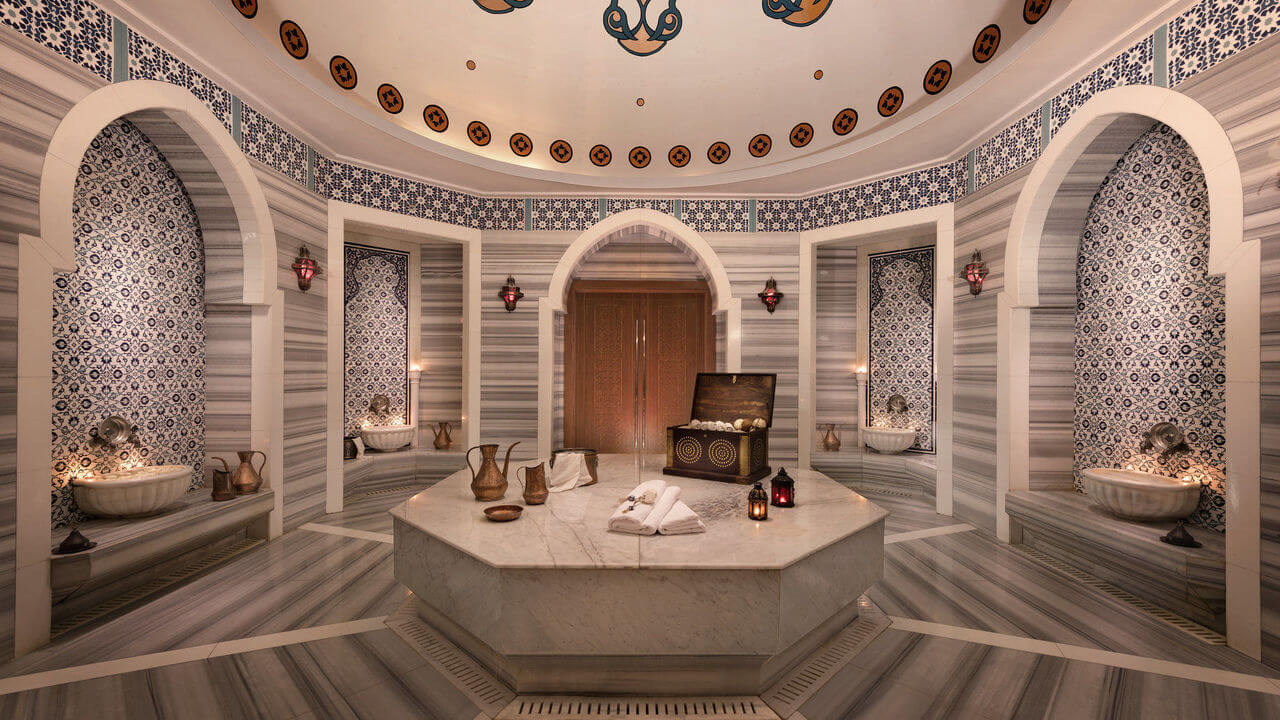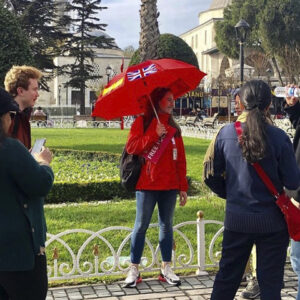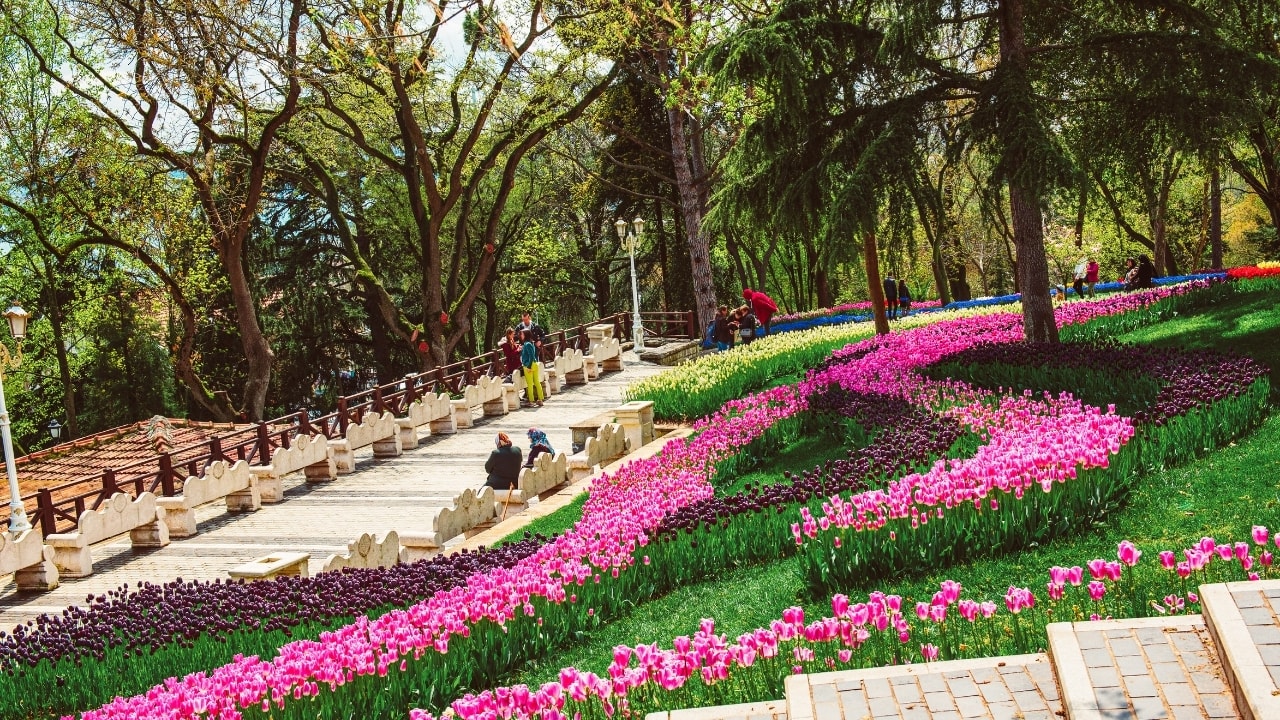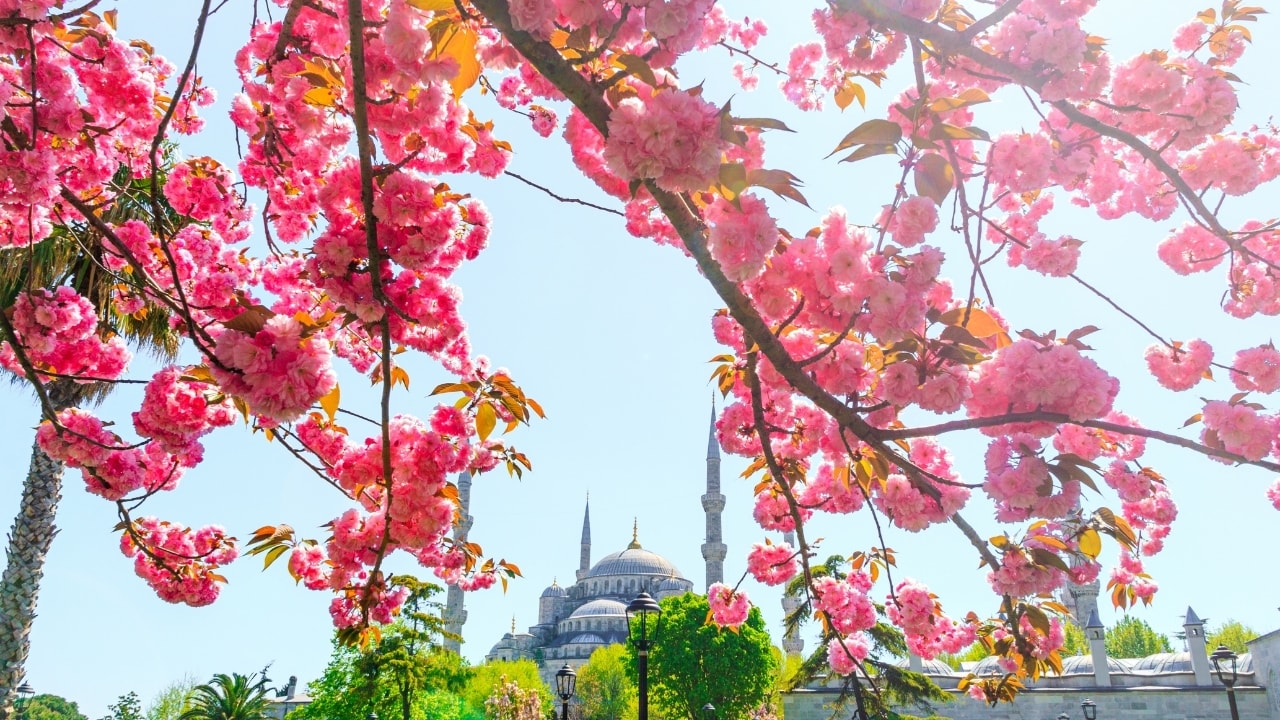Istanbul’s Hammams: A Relaxing and Cultural Experience
The Hamams, or Turkish Baths, are the Ottoman adaptation of the ancient Roman baths, introduced to the region during the Byzantine Empire. Beyond being spaces for cleansing and relaxation, hamams hold deep socio-cultural significance, serving as centers for gatherings and celebrations.
In the 18th century, Istanbul boasted more than 150 hamams. While the number has decreased today, many still operate, ranging from tourist-friendly establishments to smaller local hamams frequented by city residents.
What is the Turkish Bath experience like?
A Turkish bath follows a well-defined routine that blends relaxation, cleansing, and rejuvenation:
- Warm room: Visitors relax in a warm room designed to heat the body with hot, dry air, helping to open pores and promote perspiration.
- Hotter room: A transition to an even hotter room intensifies the body’s exposure to heat.
- Cold water splash: A refreshing temperature contrast that revitalizes the body.
- Washing and massage: A deep cleansing treatment using an exfoliating mitt called a kese, followed by a relaxing massage.
- Cooling room: The experience concludes in a cool room where the body can rest and recover.
This process not only rejuvenates the body but also provides mental relaxation, delivering a holistic wellness experience.
Architecture and History of the Turkish Bath
Hamams combine the tradition of steam baths from Central Asia, brought by the Turks, with the functionality of Roman baths. This unique design became a hallmark of the Ottoman Empire, notable for both its architecture and cultural significance.
During the height of the Ottoman Empire, magnificent hamams were constructed in Istanbul and other conquered regions. Some of the most notable include:
- Çemberlitaş Hamamı: Designed by the renowned Ottoman architect Mimar Sinan.
- Süleymaniye Hamam: Part of the Süleymaniye Mosque complex.
- Selimiye Mosque Bath: Located in Edirne, it is another example of Ottoman heritage.
These spaces were integrated into mosques and community centers, serving as hubs for social interaction, relaxation, and ceremonial events.
Hamams as Social Hubs
Hamams were not only places for physical cleansing but also centers of social life. Women used these facilities to celebrate events like births and weddings, while men discussed politics or business matters. Often, these spaces had separate areas or specific schedules for men and women, ensuring both inclusion and privacy.
Famous Hamams in Istanbul
- Çemberlitaş Hamamı: The most famous hamam in Istanbul, located in the heart of the historic district and easily accessible by tram.
- Süleymaniye Hamam: Known for being the only traditional mixed hamam in Istanbul, ideal for couples and families.
- Galatasaray Hamam: Situated near Taksim, it’s an excellent option for those seeking a central hamam experience.
- Cağaloğlu Hamam: One of the oldest and most picturesque hamams in Istanbul, located in the city’s historic area.
Why visit a Turkish bath?
Experiencing a Turkish bath is a journey into centuries of history, tradition, and wellness. From its impressive architecture to the physical and mental benefits it offers, a hamam is an essential part of any visit to Turkey. It is an opportunity to relax, rejuvenate, and connect with a rich and vibrant culture.
Tips for Enjoying a Hamam Experience
- Bring comfortable clothing and a change of clothes for after the bath.
- Book in advance, especially for the more popular hamams.
- Relax and let the experts guide you through this unique experience.
Turkish baths provide a unique blend of history, culture, and relaxation, making them a must-try experience when visiting Turkey.














3 thoughts on “Istanbul’s Hammams”
★★★★★
My journey to ‘Istanbul’s Hammams’ was nothing short of amazing. A must-see for anyone exploring the area!
★★★★★
The charm of ‘Istanbul’s Hammams’ captivated me entirely. It’s a destination that leaves no one indifferent.
★★★★★
Exploring ‘Istanbul’s Hammams’ exceeded all my expectations. A perfect combination of culture, beauty, and knowledge.